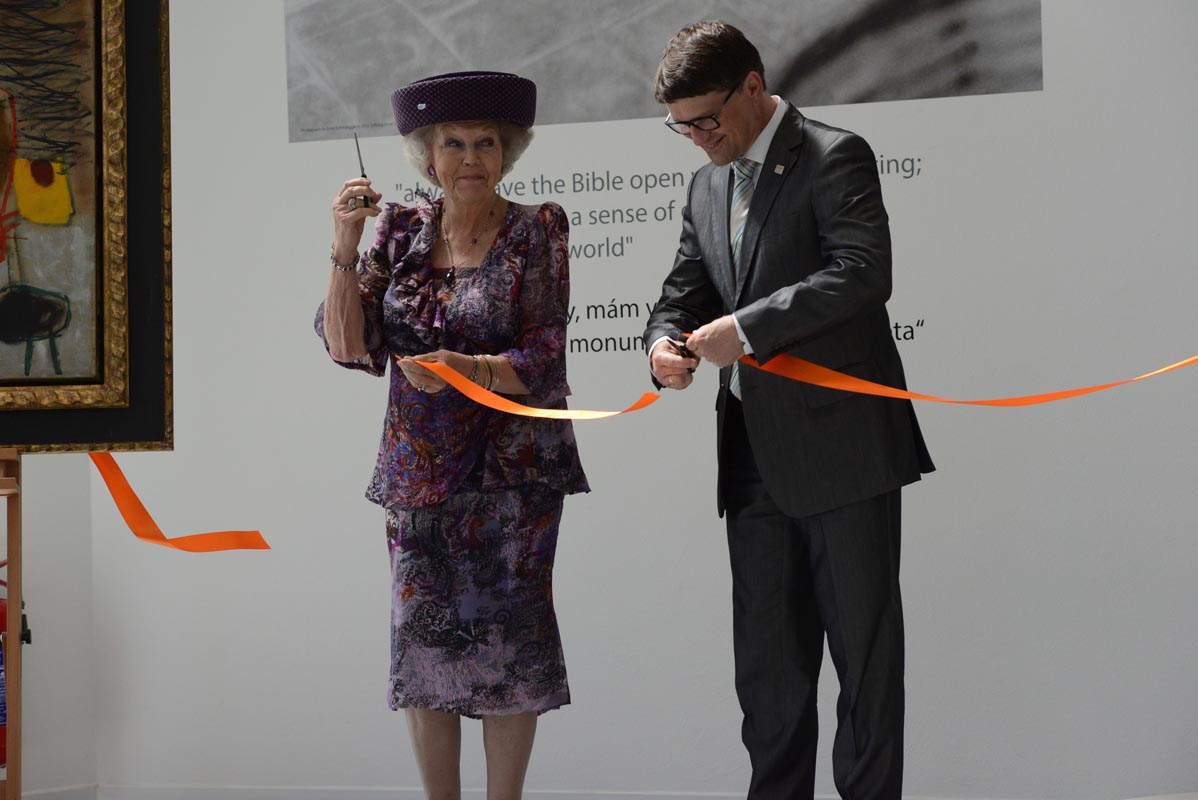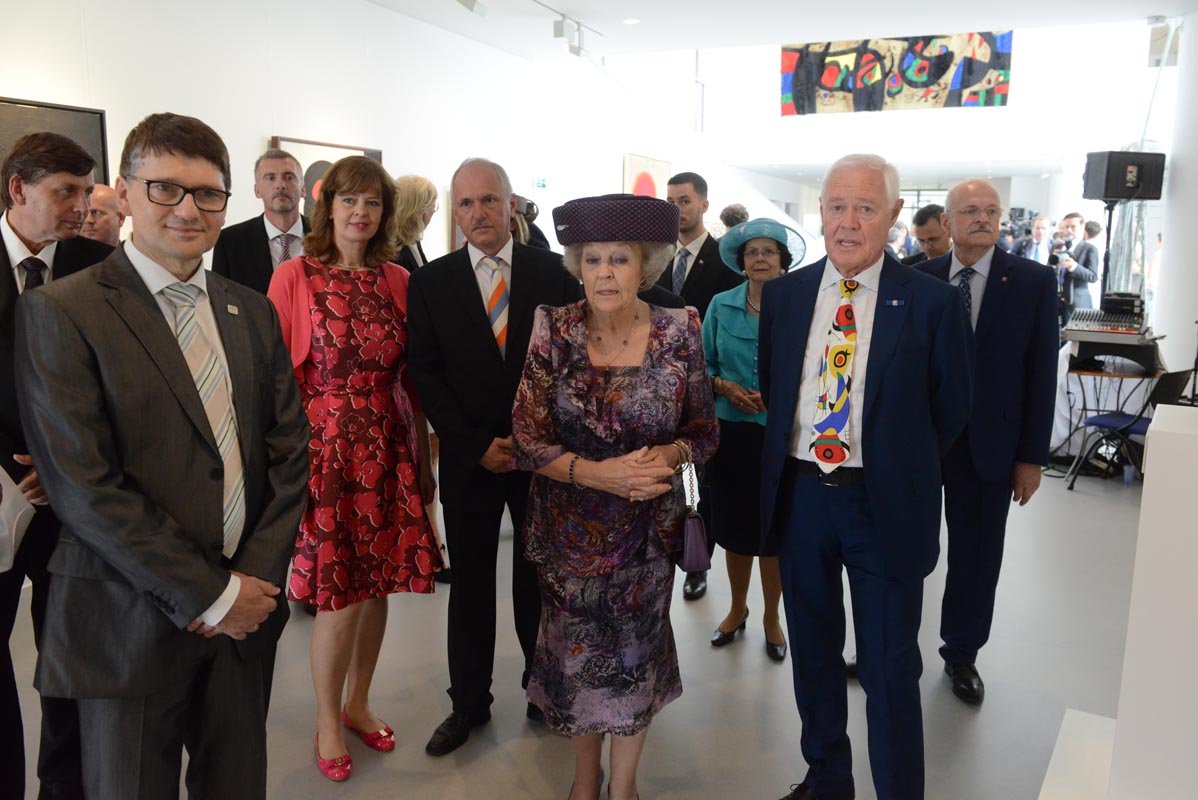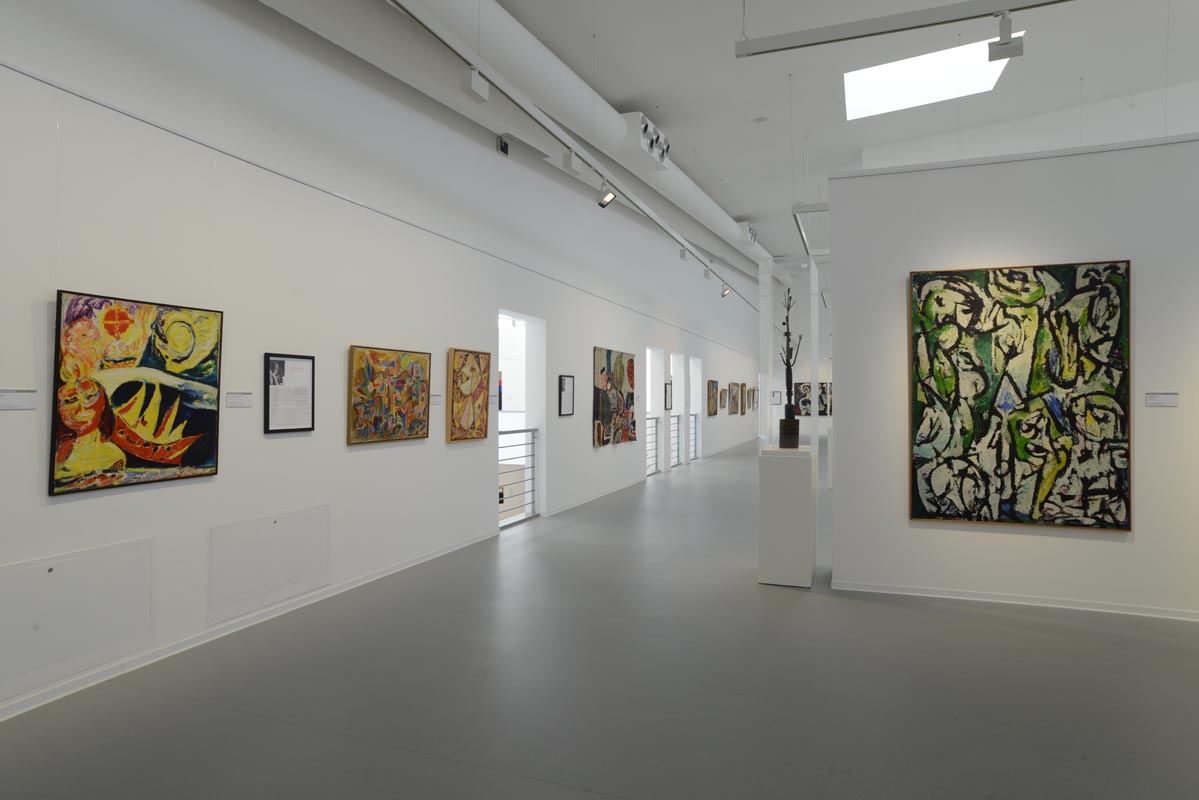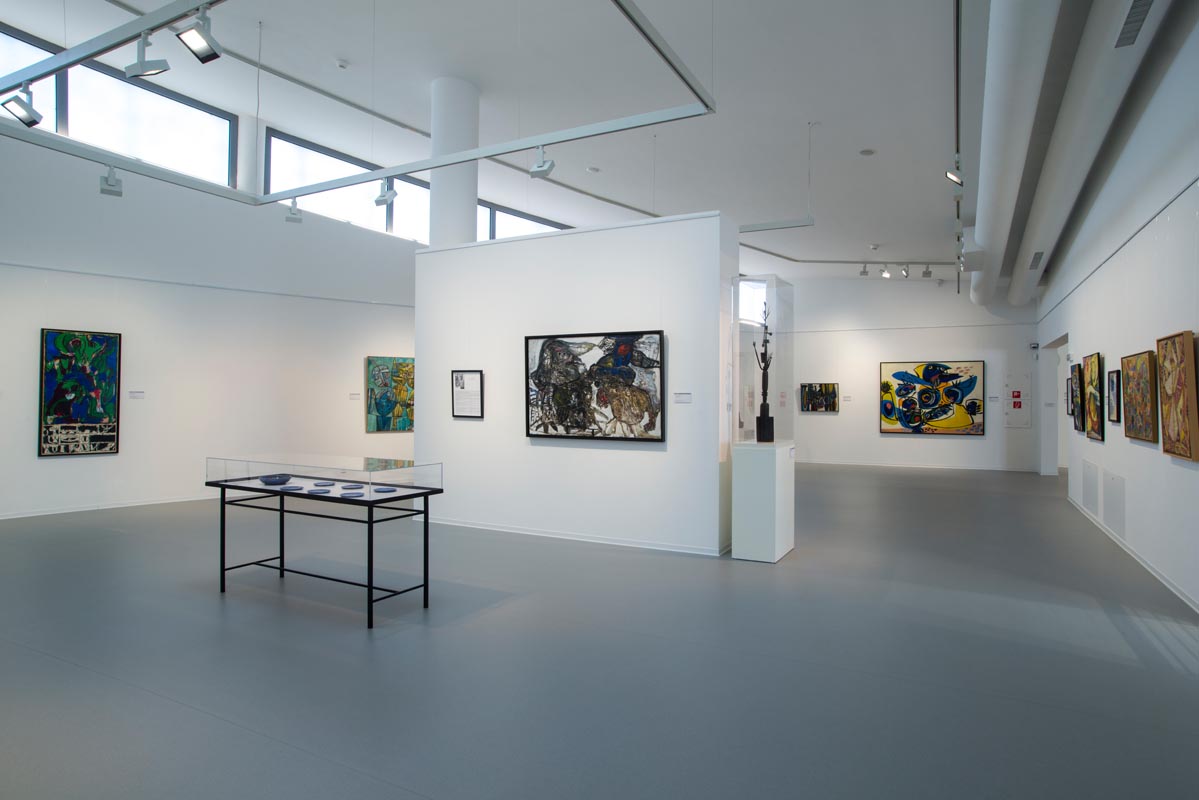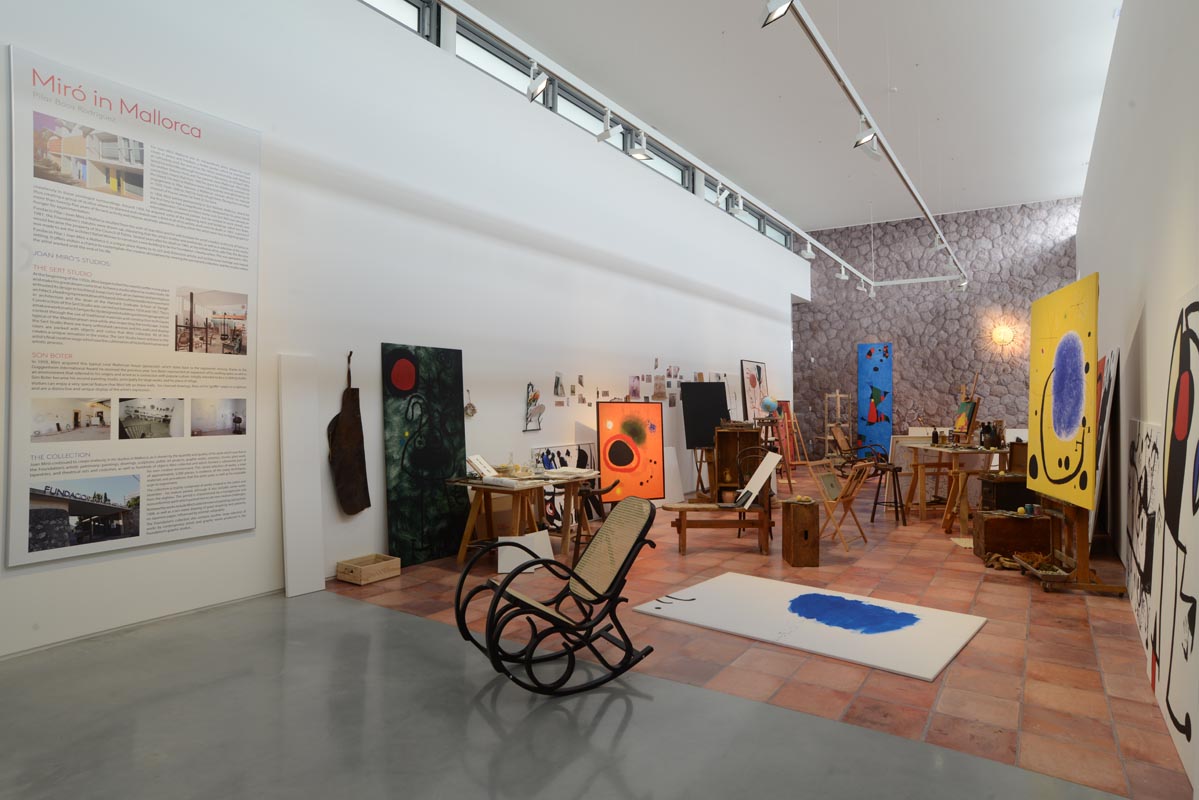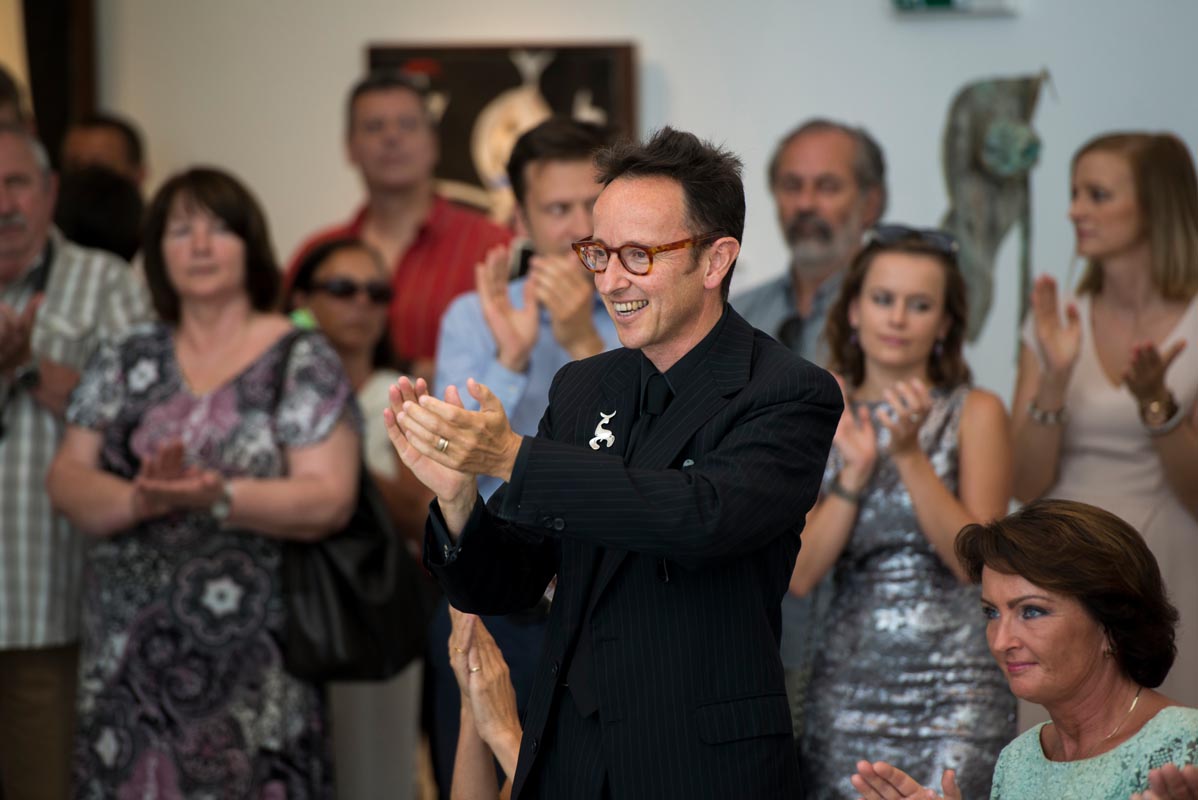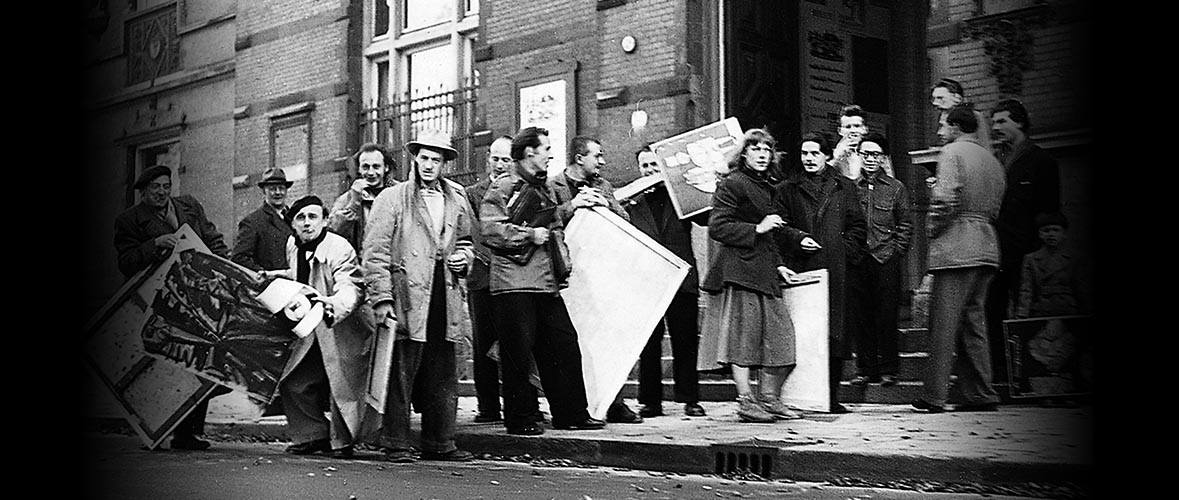

Joan Miró & Pierre Alechinsky, Karel Appel, Eugène Brands, Constant, Corneille, Jacques Doucet, Henry Heerup, Egill Jacobsen, Robert Jacobsen, Asger Jorn, Lucebert, Jan Nieuwenhuijs, Carl-Henning Pedersen, Anton Rooskens, Shinkichi Tajiri, Theo Wolvecamp
By embarking on this challenging project, the Danubiana Meulensteen Art Museum has succeeded in bringing to Slovakia top artwork of the European avant-garde. The exhibition concept also complies with demanding professional criteria by providing a comparative analysis of the work of Joan Miró and the members of the CoBrA group and by examining the similarity of their starting points and philosophical essence and the congeniality of their visual language.
Miro and CoBrA were both part of the European avant-garde: CoBrA as a movement and Miro as a single artist. Exhibiting them together shows their artistic kinship that clearly existed even though Miró was not in close contact with CoBrA. By bringing together works by Miró and CoBrA, this kinship between two generations of innovative artists is explored.
Miró
Joan Miró (1893–1983) is one of the world’s most beloved artists, yet it has been nearly sixty years since the last large-scale exhibition of his work was held in the Netherlands. This unconventional exhibition brings together works from the beginning of Miró’s artistic development in the 1930s until just before his death in 1983. The focus is on his works in a variety of disciplines and his experiments with materials. The exhibition features paintings and sculptures, drawings, prints, tapestries and an original illustrated book, all of which documents the inventiveness of his artistic concept and innovativeness. The exhibition collection is composed of loans from the artist’s family collection, the Miró Foundation in Palma de Mallorca and the Meulensteen collection. Many of these works are being exhibited for the first time in Slovakia. The exhibition (installed in Danubiana’s new section) also includes a reconstruction of the artist’s studio in Palma de Mallorca.
After the Second World War, the Spanish master’s work pointed the way forward for a new generation of experimental artists. This exhibition focuses on both the art-historical relationship as well as the artistic kinship between Miró’s work and that of CoBrA artists Pierre Alechinsky, Karel Appel, Eugène Brands, Constant, Corneille, Henry Heerup, Robert Jacobsen, Asger Jorn, Lucebert, Carl-Henning Pedersen, Anton Rooskens, Shinkichi Tajiri and Theo Wolvecamp.
A wide selection of Miró’s later works, many of them less well known with the public, is also on display. Many of these works were created at Studio Sert, his studio on Mallorca, where his drive to experiment was given free rein from 1956 on.
CoBrA
CoBrA, an international collaboration of experimental artists, was founded in Paris in 1948. Its members called for a ‘new folk art’, rooted in the experience of everyday life.
It is barely conceivable that while they were studying at the Rijksakademie in Amsterdam Appel, Constant and Corneille were told that Matisse was a ‘decorator’ and Van Gogh could not paint. Yet these young artists were, above all, interested in the innovators in modern art. As early as the 1930s, Danish avant-garde artists were exploring the works of Paul Klee and Joan Miró in depth. They associated Miró’s poetic universe with an ‘authentic’ and free form of expression.
Both Miró and the members of CoBrA considered themselves ‘myth-making’ artists. They transformed the scale and meaning of elements to evoke a different dimension. Animals were given human appearances and recurring symbols such as women, birds, heavenly bodies, ladders and snakes pointed to a different sphere. Miró and the CoBrA artists drew on the same sources, including pre-history, folk art and popular culture. In their view, being guided by a material’s inherent properties and potential was the surest way to achieve a form of expression that was as original as possible.
The excellent collection of sixty CoBrA group paintings was loaned by the Cobra Museum of Modern Art, Amstelveen; other pieces are from exceptional private
collections.





